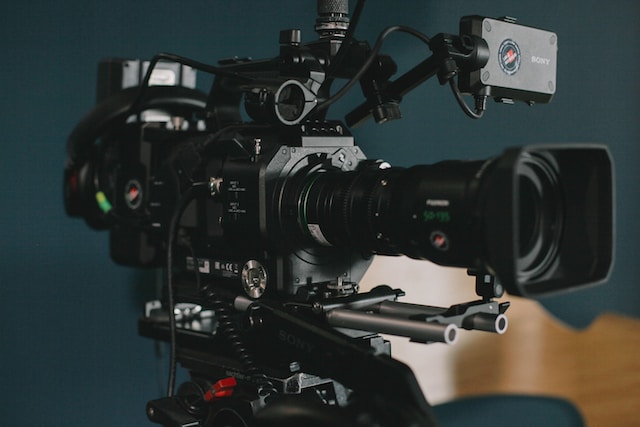Looking to start a YouTube channel or improve the quality of your vlogs? One of the most important tools in your arsenal will be your camera.
With so many options on the market, it can be overwhelming to choose the best camera for your needs. In this article, we’ll break down some of the top cameras for YouTube vlogging and help you make an informed decision.
When it comes to vlogging, there are a few key features to look for in a camera. First and foremost, you want a camera that is portable and easy to use. You’ll likely be carrying it around with you all day, so it should be lightweight and compact. It should also have a flip-out screen so you can see yourself while recording.
Another important factor is image quality. You want a camera that can shoot in high resolution and has good low-light performance. This will ensure that your vlogs look professional and polished. Of course, budget is also a consideration, so we’ll include options at a variety of price points. Let’s dive in and discover the best cameras for YouTube vlogging.
Table of contents
Understanding Vlogging Cameras
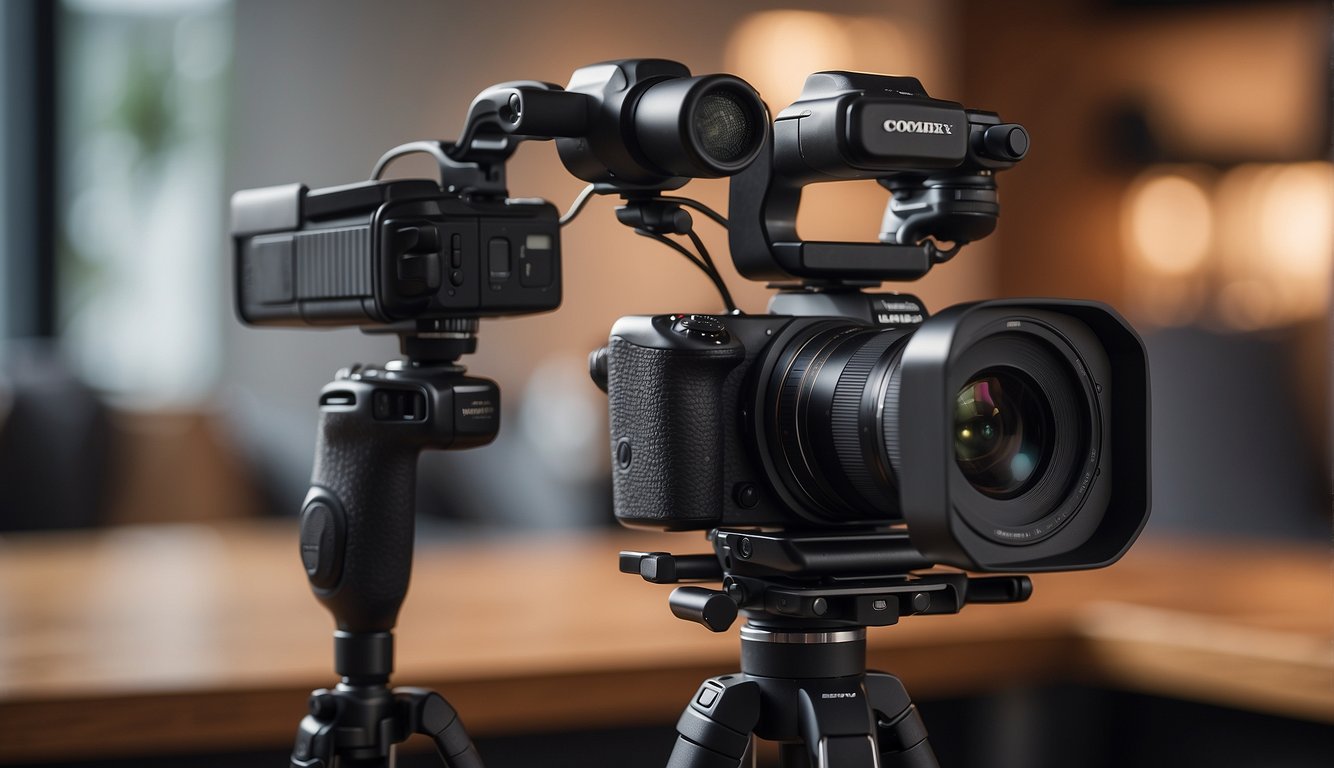
When it comes to vlogging, having the right camera can make all the difference. But with so many options available, it can be overwhelming to choose the best camera for your needs. In this section, we’ll break down the different types of cameras for vlogging, key features to look for, and explain some common camera terminology.
Types of Cameras for Vlogging
There are several types of cameras that are suitable for vlogging, each with their own pros and cons. Here are some of the most popular options:
Compact Cameras
Compact cameras, also known as point-and-shoot cameras, are small and lightweight, making them easy to carry around. They are also relatively affordable and user-friendly. However, they may not have the best image quality or low-light performance.
Mirrorless Cameras
Mirrorless cameras are similar to DSLRs but without the mirror mechanism. They are smaller and lighter than DSLRs, making them more portable. They also offer interchangeable lenses and good image quality. However, they may be more expensive than compact cameras.
DSLR Cameras
DSLR cameras are popular among professional photographers and vloggers. They offer great image quality, interchangeable lenses, and advanced features. However, they can be bulky and heavy, making them less portable.
Action Cameras
Action cameras, such as GoPro, are small and rugged, making them ideal for vlogging on the go. They are also waterproof and shockproof. However, they may not have the best image quality or low-light performance.
Key Camera Features for Vloggers
When choosing a vlogging camera, there are several key features to consider:
4K
4K resolution provides four times the number of pixels as 1080p, resulting in sharper and more detailed footage. However, it may require more storage space and processing power.
Image Stabilization
Image stabilization helps reduce camera shake, resulting in smoother footage. This is especially important when vlogging on the go or in situations where a tripod is not available.
Autofocus
Autofocus helps keep your subject in focus, even when moving around. This is important for vlogging, as it ensures that your footage is clear and in focus.
Low Light Performance
Good low light performance is important for vlogging in dimly lit environments. Look for a camera with a wide aperture and good ISO performance.
Battery Life
Battery life is important for vlogging on the go. Look for a camera with good battery life or consider purchasing extra batteries.
Camera Terminology Explained
Here are some common camera terms you may come across:
- Aperture: The opening in the lens through which light passes.
- ISO: The sensitivity of the camera’s sensor to light.
- Shutter Speed: The amount of time the camera’s shutter is open, allowing light to hit the sensor.
- Focal Length: The distance between the lens and the sensor, measured in millimeters.
- Depth of Field: The distance between the nearest and farthest objects in focus.
Top Cameras for YouTube Vlogging

If you’re looking to start a YouTube vlogging channel, choosing the right camera is crucial. With so many options available, it can be overwhelming to decide which one is best suited for your needs. In this section, we’ll take a look at some of the top cameras for YouTube vlogging and what makes them stand out.
Best Overall Vlogging Cameras
When it comes to the best overall vlogging cameras, the Sony ZV-1 and the GoPro HERO10 Black are two of the most popular choices. The Sony ZV-1 is a compact camera that offers excellent video quality, fast autofocus, and a built-in ND filter for shooting in bright conditions. The GoPro HERO10 Black, on the other hand, is a versatile action camera that’s perfect for capturing footage on the go. It offers 5.3K video resolution, HyperSmooth 4.0 stabilization, and a front-facing display for easy framing.
Best Budget Vlogging Cameras
If you’re on a budget, the Canon PowerShot G7 X Mark III and the Sony ZV-E10 are great options to consider. The Canon PowerShot G7 X Mark III is a compact camera that offers 4K video recording, fast autofocus, and a flip-up screen for easy framing. The Sony ZV-E10, on the other hand, is a mirrorless camera that’s designed specifically for vloggers. It offers 4K video recording, fast autofocus, and a vari-angle screen for easy framing.
Best Compact Cameras for Vloggers
If you’re looking for a compact camera that’s easy to carry around, the Fujifilm X-S10 and the Nikon Z 30 are two great options to consider. The Fujifilm X-S10 is a mirrorless camera that offers 4K video recording, fast autofocus, and in-body image stabilization. The Nikon Z 30, on the other hand, is a compact mirrorless camera that offers 4K video recording, fast autofocus, and a flip-down screen for easy framing.
Best Mirrorless Cameras for Vloggers
Mirrorless cameras are becoming increasingly popular among vloggers, and the Sony α6700 is one of the best options available. It offers 4K video recording, fast autofocus, and in-body image stabilization. It also has a flip-out screen for easy framing and a microphone jack for improved audio quality.
Best DSLR Cameras for Vlogging
While mirrorless cameras are becoming more popular, DSLR cameras still have their place in the vlogging world. The Canon EOS 90D is a great option to consider, offering 4K video recording, fast autofocus, and a vari-angle screen for easy framing. It also has a microphone jack for improved audio quality.
No matter which camera you choose, make sure it fits your specific needs as a vlogger. Consider factors such as video quality, autofocus, and ease of use when making your decision. With the right camera, you’ll be well on your way to creating high-quality vlogs that your audience will love.
Camera Accessories for Enhanced Vlogging
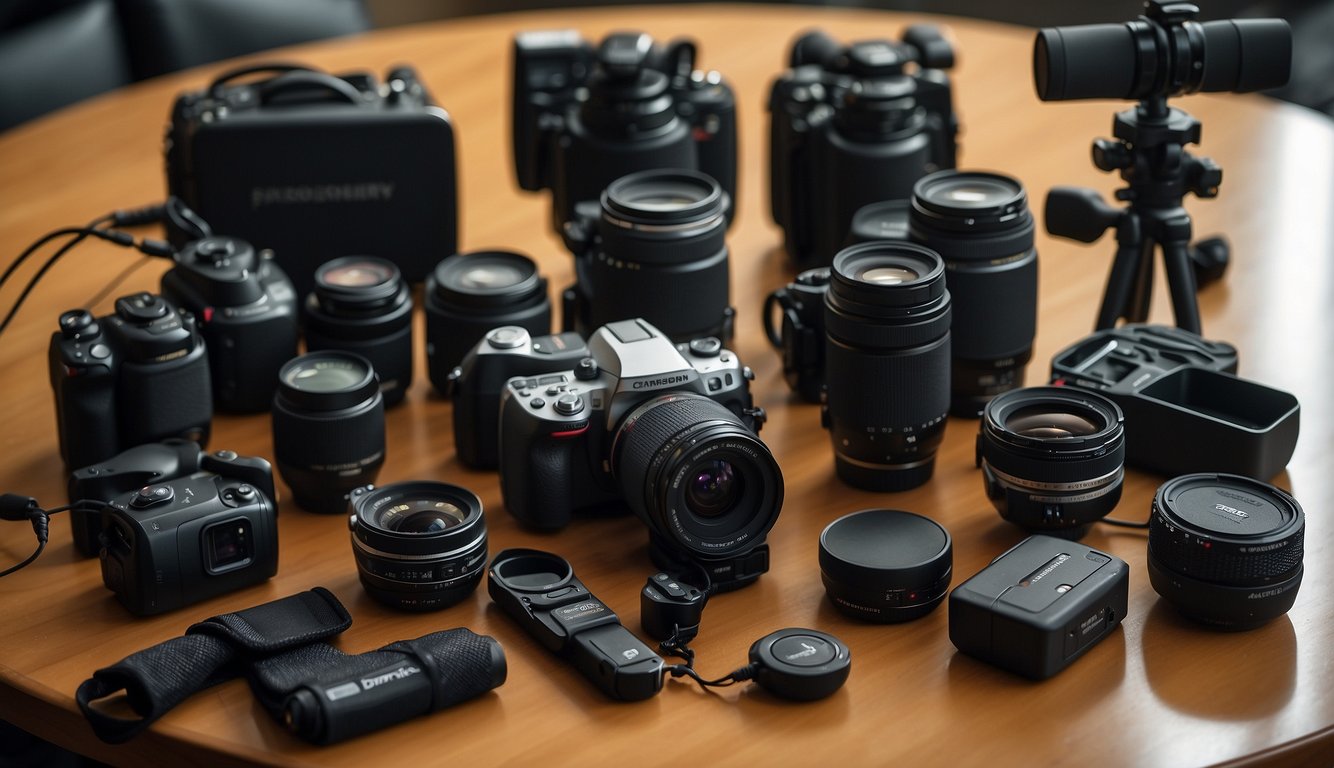
When it comes to vlogging, having the right camera is only half the battle. To truly enhance the quality of your videos, you’ll need some essential accessories to take your content to the next level. Here are some key accessories you should consider investing in:
Essential Vlogging Accessories
- Tripod Mount: A tripod mount is an essential accessory for vloggers who want to keep their camera steady while filming. It allows you to mount your camera on a tripod or other stabilizing device, giving you more control over your shots.
- Lighting: Good lighting is essential for creating high-quality video content. Whether you’re filming indoors or outdoors, having the right lighting can make a big difference in the quality of your footage. Consider investing in a portable LED light panel or ring light to help illuminate your shots.
- Lenses: Depending on the type of content you’re creating, you may want to invest in some additional lenses for your camera. Wide-angle lenses are great for capturing more of your surroundings, while telephoto lenses are ideal for capturing close-up shots.
Audio Solutions for Clear Sound
- Microphone: Good audio is just as important as good video when it comes to vlogging. A high-quality microphone can help ensure that your voice comes through loud and clear, even in noisy environments. Consider investing in a shotgun microphone or a lapel microphone for the best results.
Stabilization Gear for Smooth Footage
- Gimbal: If you want to take your vlogging to the next level, consider investing in a gimbal. A gimbal is a handheld stabilizer that helps keep your camera steady while you move around. This can be especially useful for capturing smooth footage while walking or running.
- Tripod: While a tripod mount can help keep your camera steady, a full tripod can provide even more stability. This is especially useful when filming in windy or unstable environments. Look for a tripod with adjustable legs and a sturdy base for the best results.
When it comes to vlogging, having the right accessories can make all the difference. By investing in the right gear, you can take your content to the next level and create high-quality videos that your viewers will love.
Optimizing Video Quality for YouTube
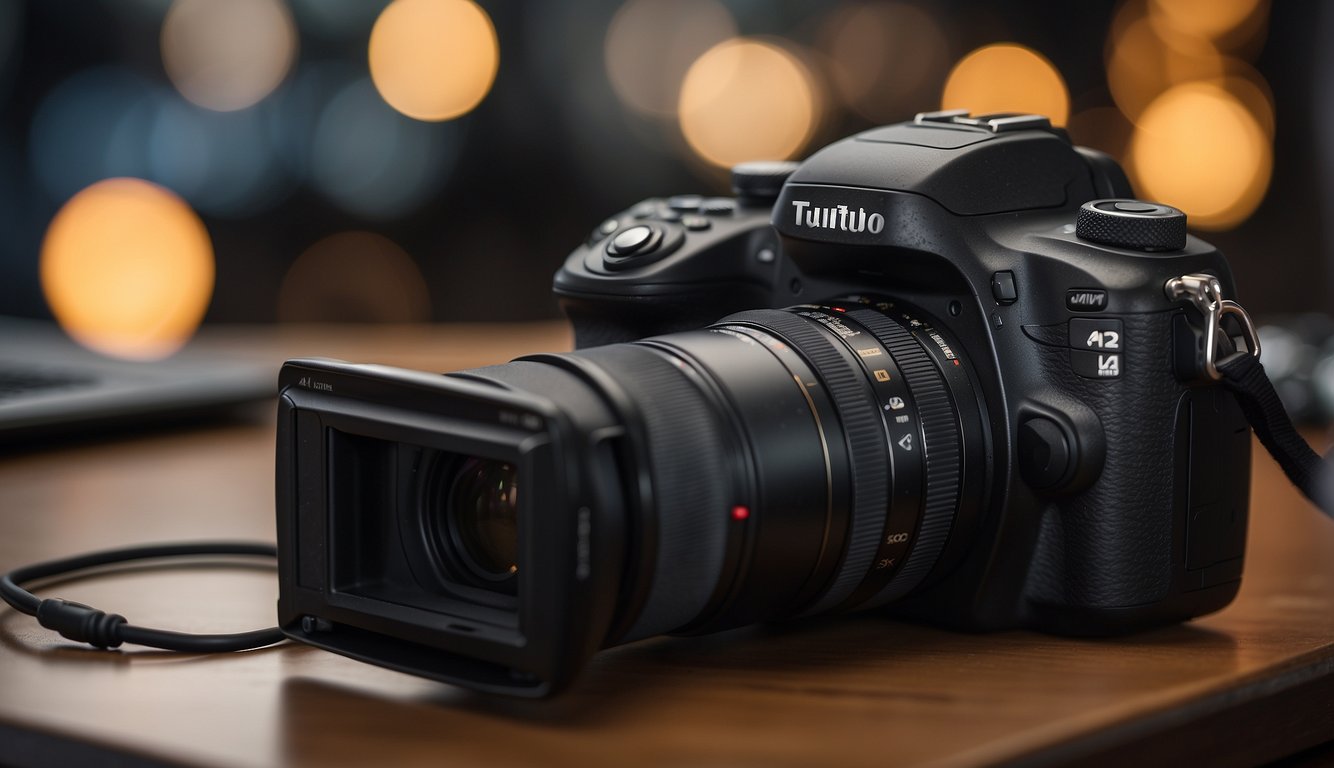
When it comes to creating content for YouTube, video quality is of utmost importance. In this section, we’ll discuss ways to optimize your video quality for YouTube, including achieving high-resolution videos, improving low-light performance, and utilizing advanced video features.
Achieving High-Resolution Videos
To achieve high-resolution videos, you’ll need a camera that can shoot in 4K. This resolution is quickly becoming the standard for YouTube videos, as it allows for crisp and clear visuals that look great on any device. Additionally, cameras with full-frame or APS-C sensors will provide better image quality and depth of field than those with smaller sensors.
When shooting in 4K, pay attention to your frame rate. YouTube supports up to 60 frames per second, which can help reduce motion blur and make your videos look smoother. However, keep in mind that higher frame rates require more processing power and storage space.
Improving Low-Light Performance
Low-light performance is crucial for vloggers who film indoors or at night. Look for a camera with a low aperture lens, which will allow more light to enter the camera and produce brighter images in low-light conditions.
Additionally, cameras with larger image sensors will perform better in low-light environments. Full-frame sensors are the best option, but APS-C sensors can also provide good low-light performance.
Advanced Video Features
Advanced video features can help take your videos to the next level. Look for a camera with slow-motion capabilities, which can add a dramatic effect to your footage. Some cameras also offer image stabilization, which can help reduce shakiness in handheld shots.
When choosing a camera, consider the type of content you’ll be creating and the features that will best suit your needs. Remember, the most important factor is to choose a camera that produces high-quality video that will look great on YouTube.
Considerations for Mobile Vloggers
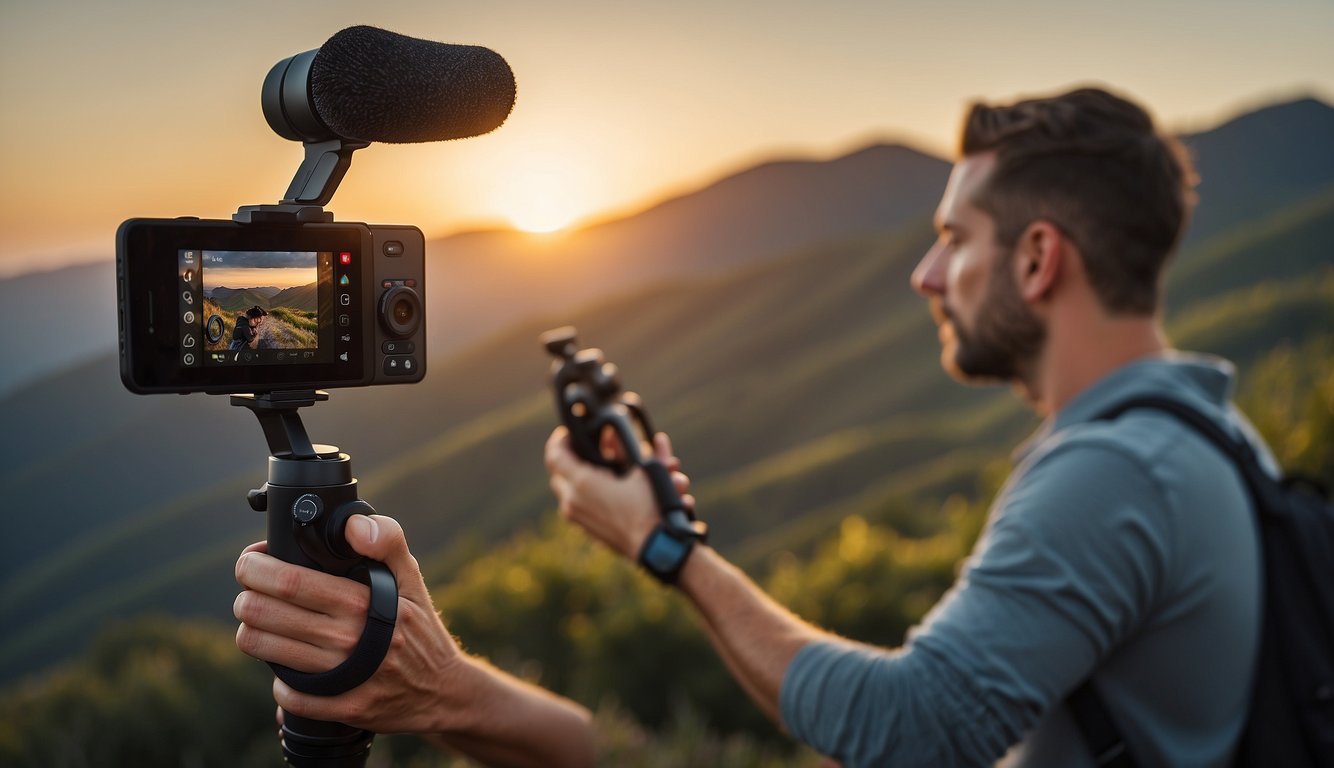
If you’re a mobile vlogger, you’ll want a camera that is easy to carry around and can capture high-quality footage on the go. Here are some considerations to keep in mind when choosing the best camera for your needs.
Smartphone Vlogging
One of the most convenient options for mobile vlogging is to use your smartphone. Most modern smartphones have high-quality cameras that can capture great footage, and there are plenty of accessories available to help you get the most out of your phone’s camera.
Some popular options include clip-on lenses, stabilizers, and external microphones. If you’re looking for a new smartphone specifically for vlogging, look for models with good low-light performance, image stabilization, and a wide-angle lens.
Portable and Action Cameras for Travel
If you’re frequently on the move, a portable or action camera may be a better option for you. These cameras are designed to be compact and durable, making them perfect for travel vlogging.
One popular option is the GoPro, which is known for its rugged design and high-quality footage. Another great option is the DJI Pocket 2, which is a small, handheld camera that can capture stabilized 4K footage.
When choosing a portable or action camera, look for models with good image stabilization, a wide-angle lens, and the ability to shoot in high resolutions. You may also want to consider features like waterproofing and built-in microphones.
Overall, whether you choose to use your smartphone or a dedicated camera, there are plenty of options available for mobile vloggers. Consider your specific needs and preferences to find the best camera for your vlogging style.
Vlogging on Different Platforms
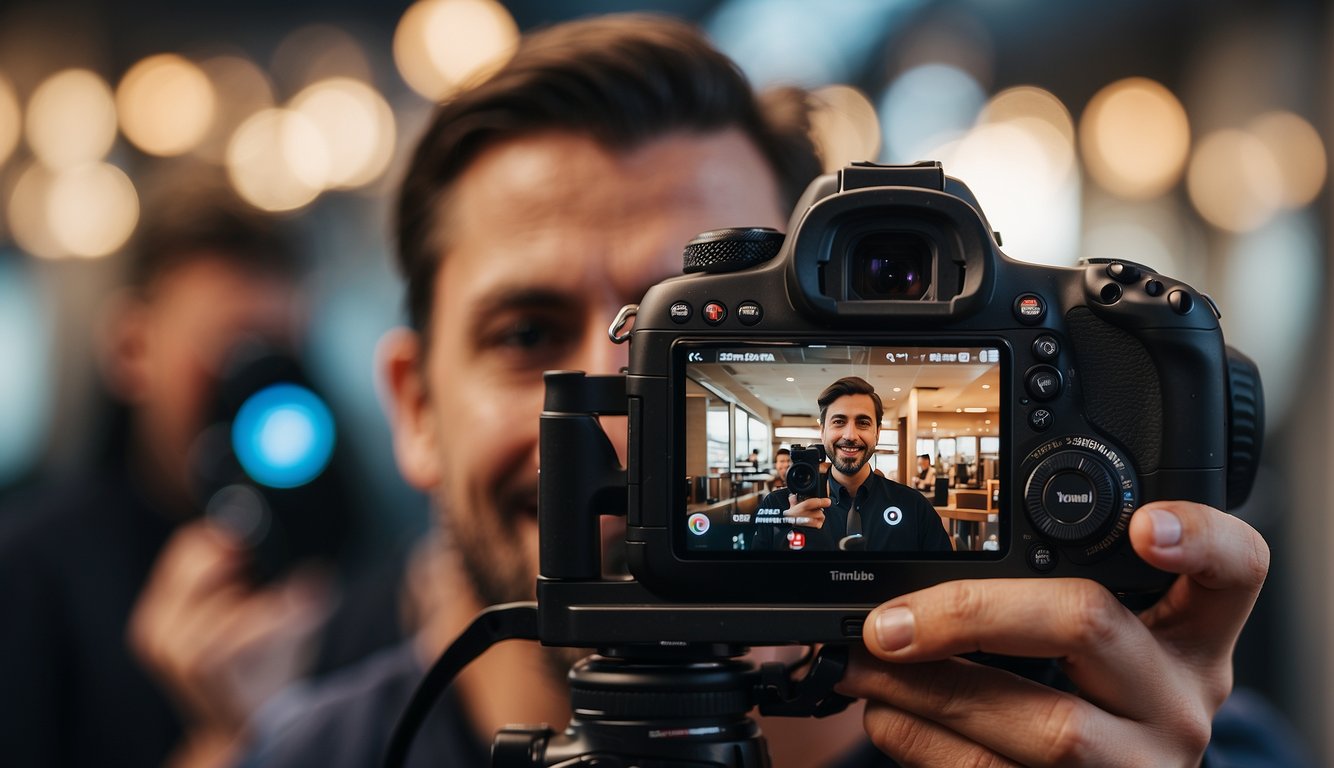
YouTube vs. TikTok vs. Instagram
When it comes to vlogging, there are several platforms available to share your content. YouTube, TikTok, and Instagram are some of the most popular platforms for vloggers. YouTube is known for longer-form content, while TikTok and Instagram are more focused on short-form videos.
YouTube is the go-to platform for vloggers who want to create longer videos and build a loyal following. The platform is great for in-depth tutorials, product reviews, and storytelling. TikTok, on the other hand, is all about short-form videos that are easy to consume and share. It’s a great platform for showcasing your creativity and humor. Instagram is a hybrid platform that allows you to share both short and long-form content. The platform is perfect for sharing snippets of your daily life and behind-the-scenes footage.
Adapting Content for Social Media
When it comes to vlogging on different platforms, it’s important to adapt your content for each platform. For example, if you’re creating content for YouTube, you’ll want to focus on longer-form content that provides value to your audience.
On TikTok, you’ll want to create short-form videos that are entertaining and shareable. And on Instagram, you’ll want to focus on creating visually appealing content that showcases your personality.
It’s also important to keep in mind the different audiences on each platform. For example, YouTube has a more mature audience that is interested in in-depth tutorials and reviews, while TikTok has a younger audience that is more interested in entertaining and humorous content. Instagram has a diverse audience that is interested in both short and long-form content.
In conclusion, vlogging on different platforms requires adapting your content to fit the platform and audience. By understanding the strengths of each platform and creating content that resonates with your audience, you can build a loyal following and grow your vlogging career.
Vlogging Equipment Beyond the Camera
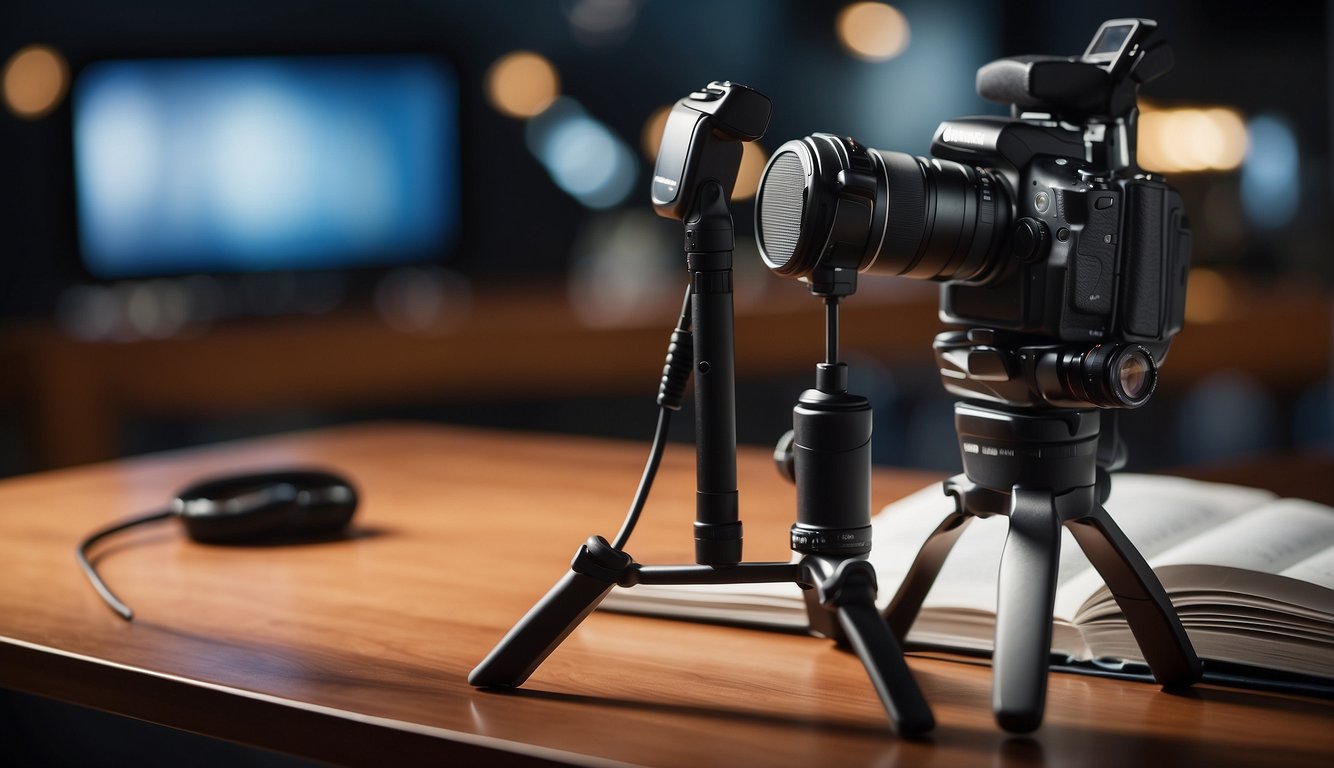
When it comes to vlogging, having the right camera is only half the battle. To take your content to the next level, you’ll need to invest in some additional equipment. Here are a few key pieces of gear to consider:
The Role of Editing Software
Editing software is a crucial component of any vlogger’s toolkit. It allows you to trim and arrange your footage, add music and sound effects, and apply color correction and other effects to give your videos a polished, professional look.
There are plenty of options out there, ranging from free tools like iMovie and OpenShot to more advanced software like Adobe Premiere Pro and Final Cut Pro X. Depending on your needs and budget, you may want to experiment with a few different programs to find the one that works best for you.
Using Drones and Action Cams Creatively
Drones and action cameras are two other pieces of equipment that can take your vlogging to new heights. Drones allow you to capture stunning aerial footage, while action cameras can be mounted on your body or equipment to give viewers a first-person perspective.
When using these tools, it’s important to think creatively and find unique angles and shots that will make your content stand out. For example, you could use a drone to capture sweeping shots of a city skyline, or mount an action camera on your skateboard to give viewers a sense of what it’s like to ride through the streets.
Overall, investing in additional equipment beyond your camera can help you create more engaging and dynamic vlogs. By experimenting with different tools and techniques, you can find new ways to tell your story and connect with your audience.
Upcoming Vlogging Camera Trends
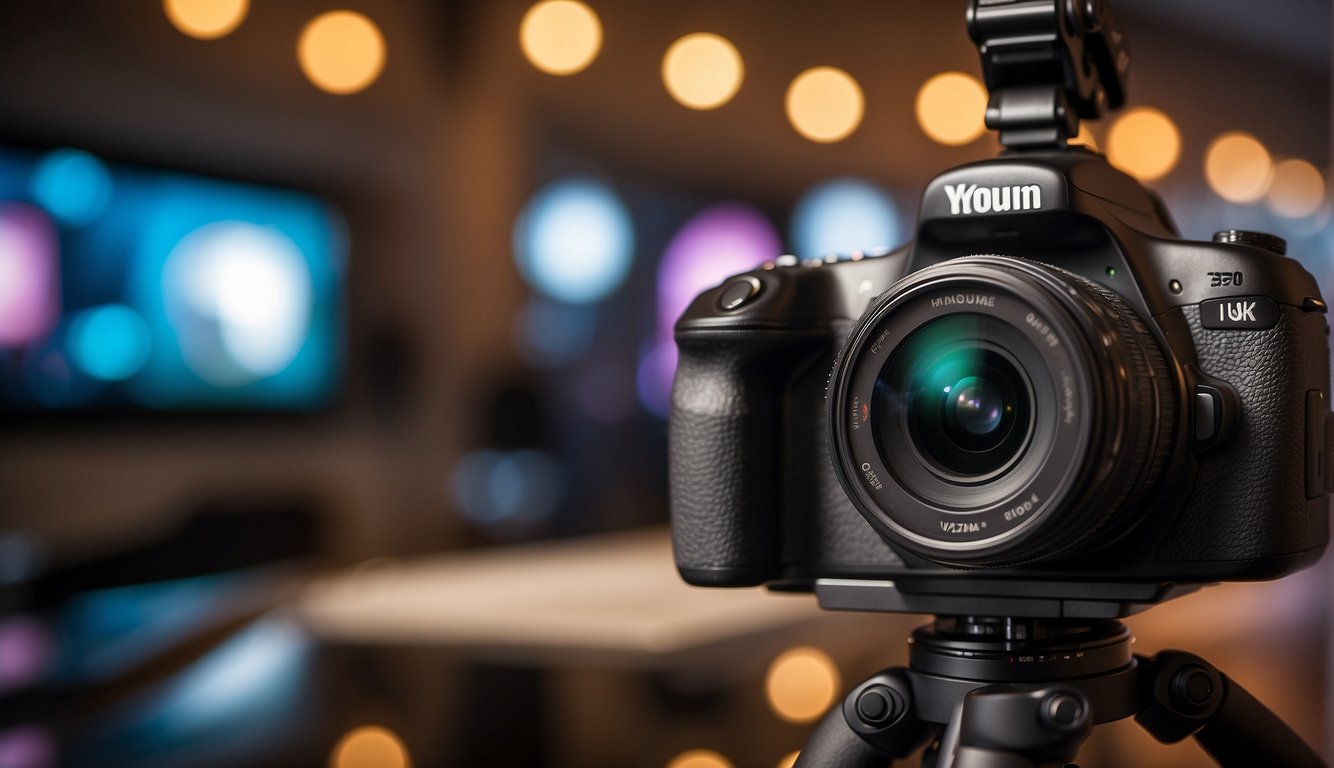
As the vlogging industry continues to grow, camera manufacturers are constantly innovating to meet the demands of content creators. Here are some trends to keep an eye on when choosing the best camera for your YouTube vlogging needs.
Innovative Camera Features to Watch
In-body image stabilization (IBIS) is becoming increasingly popular in vlogging cameras. IBIS helps to reduce camera shake, resulting in smoother footage. This feature is especially useful for vloggers who film on the go or without a tripod.
Autofocus systems are also improving, making it easier to keep your subject in focus while moving around. Some cameras even have eye-tracking autofocus, which can be a game-changer for vloggers who film themselves.
Headphone jacks are essential for vloggers who need to monitor their audio while filming. Some cameras even have built-in microphones that are specifically designed for vlogging.
Emerging Brands and Models
While established brands like Canon and Sony dominate the vlogging camera market, emerging brands and models are worth considering. For example, the Fujifilm X-T4 is a mirrorless camera with in-body image stabilization and a headphone jack, making it a great option for vloggers.
Full-frame cameras like the Sony A7S III and the Canon EOS R5 are also gaining popularity among vloggers. These cameras offer superior image quality and low-light performance, but they come with a higher price tag.
Finally, APS-C cameras like the Canon M50 Mark II and the Sony A6400 are great options for vloggers who want a compact camera with interchangeable lenses. These cameras are more affordable than full-frame cameras and offer excellent video quality.
In conclusion, keep an eye on these upcoming vlogging camera trends when choosing the best camera for your YouTube channel. With the right camera, you can take your vlogging to the next level and create high-quality content that your viewers will love.
Conclusion
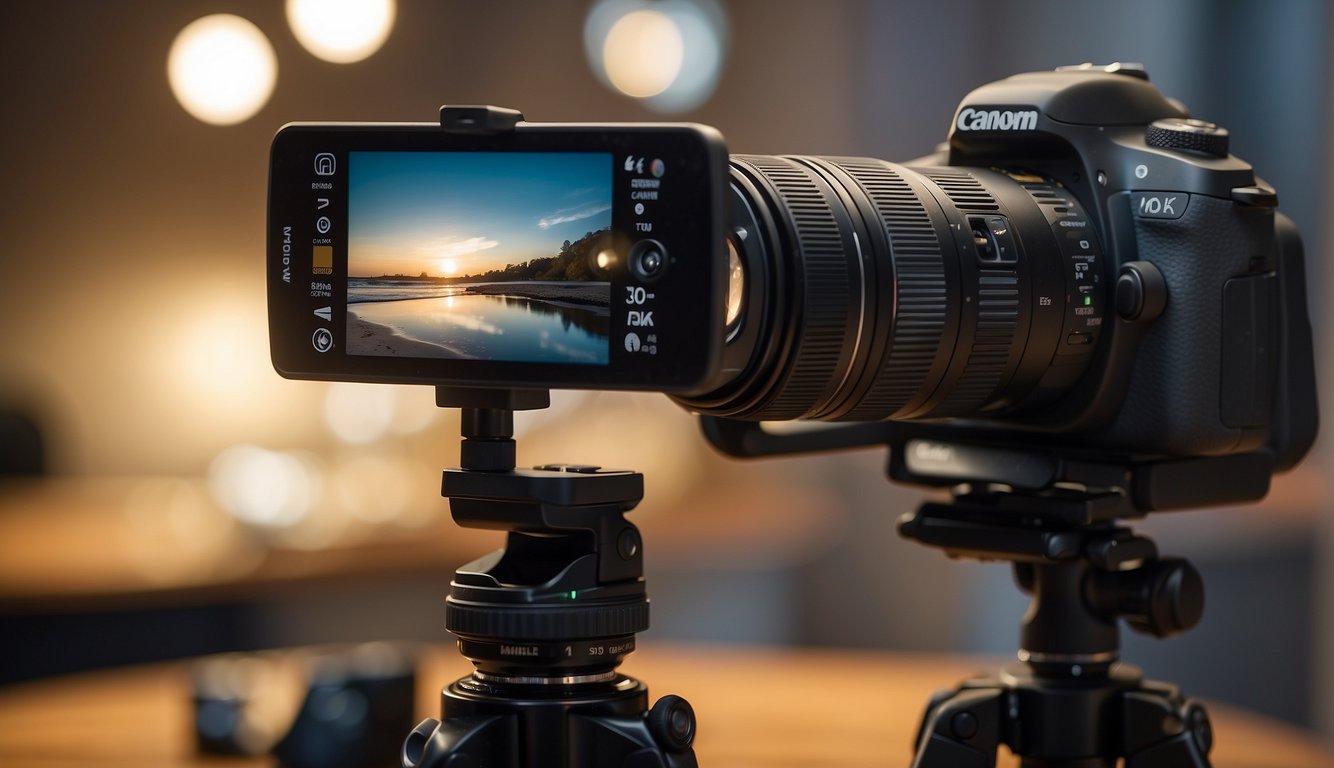
In conclusion, choosing the best camera for YouTube vlogging is crucial for any vlogger or creator who wants to produce high-quality content. With the wide range of vlogging cameras available in the market, it can be overwhelming to choose the right one for your needs.
When selecting a vlogging camera, it’s essential to consider factors such as image and video quality, portability, battery life, and ease of use. You want a camera that can capture high-quality footage while being lightweight and easy to carry around. Additionally, you want a camera that is user-friendly and has features that are intuitive to use.
After researching and testing various vlogging cameras, we recommend the Canon EOS M50 Mark II as the best camera for YouTube vlogging. It offers excellent image and video quality, a flip-out screen, and a compact and lightweight design. The autofocus system is fast and accurate, making it easy to capture high-quality footage on the go.
Other great options for vlogging cameras include the Sony ZV-1, which has a built-in ND filter and excellent autofocus, and the DJI Pocket 2, which is a compact and portable camera that can shoot stabilized footage.
Ultimately, the best camera for YouTube vlogging will depend on your specific needs and preferences. Whether you’re a beginner or a seasoned vlogger, there’s a camera out there that will suit your needs and help you create compelling content for your audience.
